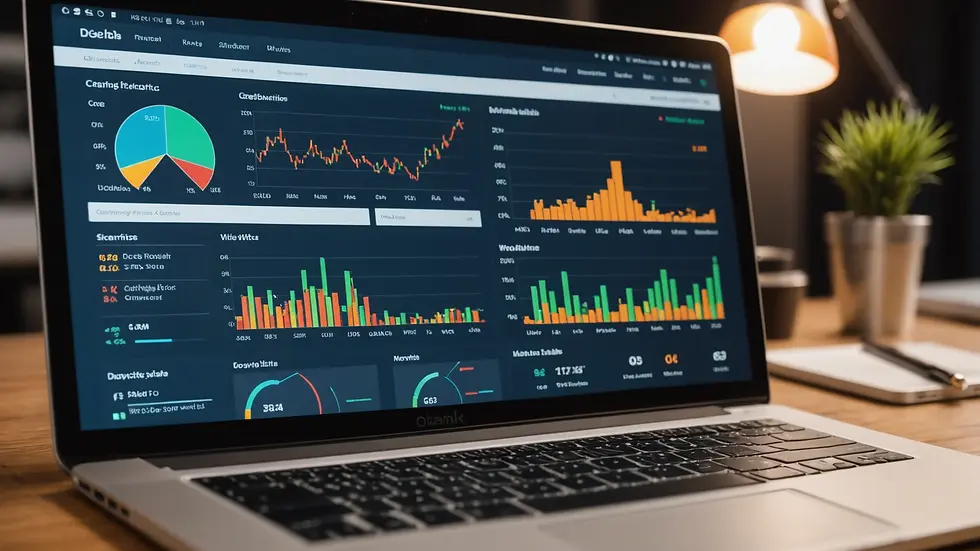6 essential SEO phases for higher google ranks
- CreativD-Sign.

- Oct 14, 2023
- 4 min read
Updated: Feb 9
Search Engine Optimization (SEO) is vital for increasing your website's visibility and attracting potential customers. With over 3.5 billion searches conducted on Google daily, ranking higher can significantly boost your web traffic. This guide will walk you through six essential SEO phases that can effectively improve your Google ranking.
Phase 1: Research and Analysis
The first step in the SEO journey is comprehensive research and analysis. To start, identify the keywords your audience is using. Tools like Google Keyword Planner can provide insights into popular search terms. For example, if you run a bakery, keywords like “fresh sourdough bread” or “organic pastry recipes” might be relevant.
Analyzing competitors is also essential. Look at their websites to see which keywords they rank for and the types of content they produce. For instance, if a competitor ranks highly for “gluten-free cake recipes,” consider creating even more detailed guides or videos that provide additional value.
By gathering this information, you lay a strong foundation for your SEO strategy.

Phase 2: On-Page Optimization
After identifying relevant keywords, the next phase is on-page optimization. This means refining your website’s content and structure to enhance search engine visibility. Focus on these key areas:
Title Tags: Naturally integrate primary keywords. For example, "Best Gluten-Free Cake Recipes" can improve clarity and relevance.
Meta Descriptions: Craft concise, engaging summaries that invite clicks. A compelling meta description can increase your click-through rate by up to 5.8%.
Headings: Organize your content with headings (H1, H2, H3) for easier navigation while including keywords strategically.
Content Quality: Ensure your content is informative and engaging. If your audience seeks baking tips, provide expert insights or personal anecdotes that add a personal touch.
By enhancing these elements, you help search engines understand your content better, which can result in higher rankings.
Phase 3: Technical SEO
Technical SEO involves refining your website’s technical elements to facilitate better crawling and indexing. Pay attention to these components:
Page Speed: Studies show that 53% of mobile site visitors will leave a page if it takes longer than three seconds to load. Improve speed by compressing images and minimizing code.
Mobile Friendliness: With over 50% of web traffic coming from mobile devices, a responsive design is crucial.
Site Structure: Organize your site with clear menus and categories. Use a logical hierarchy to improve user experience.
XML Sitemap: Create and submit an XML sitemap to guide search engines through your site.
Employing these technical practices will enhance the overall performance of your website.

Phase 4: Content Creation
Quality content is central to successful SEO. High-quality content not only attracts users but also keeps them engaged. Aim to create content that is:
Relevant: Address topics that directly relate to what your audience wants. For example, “10 Tips for Baking Perfect Brownies” could catch the eye of many baking enthusiasts.
Valuable: Offer real solutions or unique insights. Consider publishing “How to Choose the Right Flour for Your Recipes.”
Engaging: Utilize images, infographics, and videos to make your content more appealing. Incorporating video can increase user engagement by as much as 88%.
Consistent: Regularly produce content to keep your audience returning. Aim to post new articles or videos once a week.
Optimize each piece of content with relevant keywords to ensure it performs well in search engines.
Phase 5: Link Building
Building a strong link profile is essential for establishing authority and credibility. High-quality backlinks from reputable sites indicate to search engines that your content has value. Here are some effective strategies:
Guest Blogging: Write for established blogs in your niche to gain backlinks. This not only earns you links but also exposes your content to new audiences.
Influencer Outreach: Collaborate with influencers to promote your content. For example, if you create a unique cake recipe, ask a popular food blogger to share it.
Content Sharing: Encourage social media sharing of your content to earn organic backlinks.
Always prioritize quality over quantity. A few links from high-authority sites can be more beneficial than numerous low-quality links.
Phase 6: Monitoring and Maintenance
The final step in your SEO strategy is ongoing monitoring and maintenance. Use analytics tools to track the performance of your SEO efforts. Key metrics to watch include:
Organic Traffic: Assess how many visitors come from search engines.
Keyword Rankings: Regularly check your keyword performance and adjust your strategy accordingly.
Bounce Rates: Analyze how many visitors leave your site after viewing just one page. A high bounce rate may indicate a need for better content engagement.
Use this data to refine your SEO approach. Regularly updating your content, optimizing for new keywords, and resolving technical issues will support your site's performance.
The Path to Higher Ranks
Improving your Google ranking involves a systematic approach across various phases. From in-depth research and on-page optimization to content creation and regular monitoring, each step is crucial.
SEO is not a one-time task; it requires ongoing efforts and adaptation. By committing to these practices, you enhance not only your search rankings but also your audience's experience. Begin implementing these phases into your SEO strategy today and watch your online presence flourish.





Comments